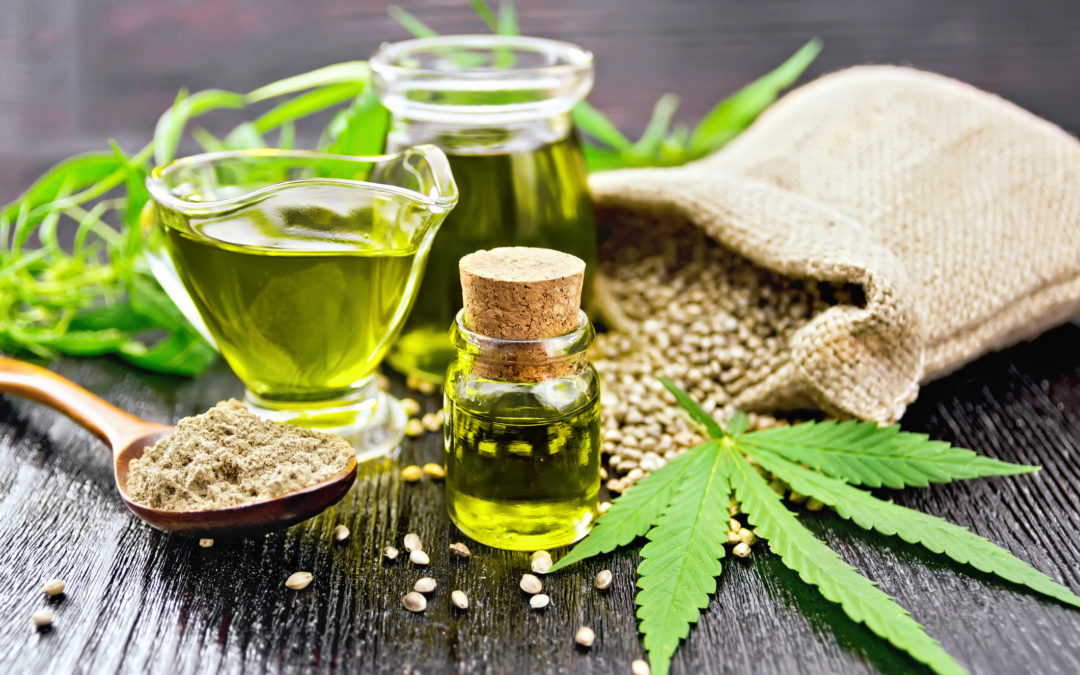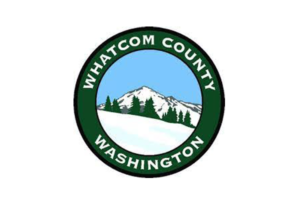The 2018 Farm Bill brought hemp to the forefront of conversations across the US agricultural industry and among consumers in general as it broadly legalized hemp after nearly five decades of the crop being banned. While farmers, businesses, investors, and consumers generate excitement about this newly legalized industry, many are concerned about the exact details of the new legislation and the market and legal risks. New Venture Advisors performed a deep dive on the industry to provide an overview of the crop and its legal status and enable readers to better understand current risks and opportunities in the hemp market. While this article does not address all of the nuances of the law and market, it is a good starting place for those seeking more information about hemp and its increasingly popular derivative, cannabidiol (CBD).
What you need to know in a snapshot:
- Hemp production, sale, and transportation was legalized in the 2018 Farm Bill
- Hemp and marijuana are the same cannabis plant, but hemp is bred to contain lower levels of the psychoactive compound that makes marijuana illegal federally
- The US hemp industry is expected to be a multi-billion dollar industry within the next five years
- Much of this demand comes from cannabidiol (CBD), a compound found in cannabis plants that is believed to provide health and wellness benefits
- Hemp and its derivative products present significant business opportunities for farmers and marketers, but there is also significant risk due to regulatory uncertainty and pricing volatility
- Regulations are still being drafted that could impact production costs and demand
- Hemp and CBD pricing is highly volatile in new markets, and declining significantly in mature markets like Colorado where supply and demand are in greater equilibrium
Hemp Primer
Hemp is an agricultural commodity crop from the Cannabaceae family of plants (Cannabis genus) which is prized for its fast growth, low production costs, sustainability, and versatility across industrial, personal, and food uses.
Confusion around the association between hemp and marijuana is common and the difference is largely a legal construct. Hemp and marijuana are from the same cannabis plant variety with the distinction being the concentration of the psychoactive cannabinoid, tetrahydrocannabinol (THC). While regulations vary slightly by country, in the majority of countries (including the US), cannabis containing a THC concentration of less than 0.3% is considered hemp, whereas cannabis with a THC concentration in excess of 0.3% is considered marijuana.
Uses of Hemp
Hemp’s versatility is a key driver of the excitement behind its recent legalization. Hemp’s broad range of uses has been understood for centuries. In 1938 Popular Mechanics predicted a promising future for the crop in an article which noted that there were over 25,000 identified uses (Medium, 2019). Hemp and hemp-derived products serve industries from fuel and chemical products, to industrial and consumer textiles, to food and personal care. Each part of the plant can be processed and used for specialized purposes, or the plant can be used whole.
Hemp Uses by Part of Plant
| Part of Plant | Uses |
| Entire Plant | Fuel Feed-stock |
| Cell Fluid | Chemicals |
| Stalk | Consumer textiles (apparel, diapers, fashion accessories, etc) Industrial textiles (rope, nets, canvas, carpets, etc.) Paper products |
| Leaves | Paper products Insulation Animal bedding Mulch and compost |
| Flowers | Oils, distillates and isolates |
| Seeds | Food oils Industrial products (inks, bio-plastics, fuel, solvents, lubricants, etc.) Personal products and soap Animal feed Human foods (protein powder, granola, cereal, etc.) |
Federal regulations enacted in the 1900s put a hold on this promising future, but the recent re-legalization of the crop has generated newfound excitement. As a result, new hemp products and supply chains are developing rapidly. In addition, the CBD market has exploded over the past five years and is driving demand for hemp. CBD is a non-psychoactive cannabinoid found in hemp and marijuana that is generating excitement for its health and wellness potential. Further discussion of CBD is found further in the article.
Growing Hemp
Hemp is an annual plant that grows well in a variety of warm temperate climates. The crop typically requires less water, pesticides, herbicides, and fertilizer than other commodity crops like corn which makes it popular because of its sustainability (Modern Farmer, 2018). Traditional row-crop methods are typically used when planting hemp for industrial purposes. This is the most economical and scalable method when planting hemp for grains, fiber, or whole-plant harvests.
The horticulture method typically relies on plant cloning instead of growing from seed. This method is more expensive, labor intensive, and difficult to scale than seed cultivation; however, it is preferred when growing hemp for CBD markets because it yields more consistent crops with higher CBD content.
Regulatory Frameworks
The 2018 Farm Bill, signed into law in December of 2018, created headlines for its legalization of hemp cultivation, but the exact regulatory implications were unclear, leaving many industry participants nervous.
Historical Regulations
Despite an active hemp industry in the 1800s and early 1900s, hemp production was discouraged and slowed significantly in the 1930s through increased taxes. Eventually, the crop was outlawed when Richard Nixon signed the Controlled Substances Act (CSA) in 1970. Due to increasing concerns about marijuana use and hemp’s association with marijuana, all cannabis was categorized as a Schedule 1 drug, halting the remaining hemp industry.
Despite efforts to legalize cannabis in certain states, all cannabis remained federally illegal until 2014 when the Agricultural Act of 2014 established pilot hemp cultivation projects for research and commercial purposes. The pilot programs were regulated by the USDA in conjunction with state departments of agriculture and allowed small-scale production of industrial hemp.
Current Regulations
The 2018 Farm Bill greatly expanded the legalization of hemp cultivation. Regulations are yet to be finalized and vary significantly between states; however, the US Department of Agriculture (USDA) and Food and Drug Administration (FDA) have made clarifying statements regarding regulatory oversight.
The 2018 Farm Bill allows for the broad cultivation, transport, sale, and importation of hemp and does not place any restrictions on the sale or possession of hemp-derived products as long as the products are produced within the framework of the law, namely, that the cannabis has a THC concentration of less than 0.3% and all harvesting and production occurred under state and federally licensed operations.
The law also mandates the development of shared state-federal regulations which include licensing and oversight of hemp cultivation and processing (Brookings, 2018). All state-run regulatory plans need to be approved by the USDA or states may choose to comply with a federally-run licensing program.
Even while additional state and federal regulations are being developed, dramatic industry growth is projected. In 2018 ~112,000 acres of land across the US was licensed for hemp cultivation even while the industry faced hurdles such as strict regulatory oversight and lack of banking and capital access. The 2018 Farm Bill changes the primary regulatory body from the Drug Enforcement Agency (DEA) to the USDA, and enables hemp farmers to obtain crop insurance, greatly reducing production risk. Furthermore, legalization is expected to open banking services, stimulate investment in hemp operations, and enable mass-market adoption.
Combined, these changes are expected to create a thriving market for hemp. Market estimates range from $2.6 billion to almost $22 billion in annual revenues by 2022 (Hemp Business Journal, The Brightfield Group).
The Impact of CBD
CBD Primer
In order to fully understand hemp, it is essential to understand its primary growth driver Cannabidiol (CBD). CBD is a phytocannabinoid found in cannabis plants that was discovered in 1940. Cannabinoids are chemical compounds that act on cannabinoid receptors in human bodies. Plant-based cannabinoids, and in particular CBD, recently gained popularity due to their perceived health and wellness benefits.
Optimism is high for the health benefits of CBD. Over 700 clinical studies are underway regarding its effectiveness in treating anxiety, cognition, movement disorders, general pain, and other conditions. CBD is believed to be an effective anti-inflammatory, antioxidant, and antipsychotic with the potential for lower side effects than many pharmaceutical drugs.
Due to historical legal restrictions, no peer-reviewed research has demonstrated the health benefits of CBD on humans, although the World Health Organization (WHO) recently found there were no adverse health outcomes from CBD and no potential for abuse (Medium, 2019; World Health Organization, 2017). In June 2018, the FDA approved Epidiolex, the first CBD-based pharmaceutical drug which treats two rare forms of epilepsy.
CBD can be derived from cannabis plants including both hemp and marijuana. A typical extraction process involves soaking the cannabis plant in solvent, such as grain or ethanol alcohol, which absorbs CBD from the plant. The solvent is then evaporated, resulting in CBD extract.
CBD isolates are also growing in popularity and take the extraction process a step further. After extraction, scientists use chemical processes to remove all other plant matter and other cannabinoids – resulting in a fine powder that is up to 99% pure CBD (Big Sky Botanicals, 2019). Extracts and isolates are sold at retail or used to create CBD food products, supplements, tinctures, creams, vaporizer oils, and other products.
CBD Regulations
The removal of hemp-derived products from the Controlled Substances Act effectively legalized hemp-derived CBD, if the hemp and CBD was produced within the new legal framework described above. Marijuana-derived CBD, and hemp-derived CBD produced outside of the regulatory framework, remain illegal federally (although available in states which have legalized marijuana).
Hemp-derived CBD is subject to its own set of regulations. With the passage of the 2018 Farm Bill, the FDA became the primary regulatory body for CBD and is actively evaluating oversight of the compound. Through numerous statements, the FDA has expressed concerns over false advertising and unknown side effects given the lack of established research. As a result, the agency banned interstate sales of food containing CBD as well as marketing of CBD dietary supplements. Furthermore, the FDA has started to crack down on unsubstantiated health claims on CBD products. On April 2, 2019, the FDA announced that it had issued warnings to three companies concerning egregious health claims for CBD-based products.
The FDA is holding a public hearing on May 31, 2019 as well as accepting public comments regarding CBD as it begins to develop regulatory frameworks. As a result of the current flux of federal oversight, state, and local regulations determine the availability of CBD products, leading to significant variances in what can be produced and sold in each state (The Washington Post, 2019).
While headwinds and uncertainty remain, the CBD market is continuing to sky rocket. In 2018 the US CBD market (including both hemp-derived and marijuana-derived CBD) grew 56% to reach $641 million and the market could exceed $2.2 billion within the next five years (Hemp Business Journal).
Hemp Pricing
Due to the nascence of the hemp market, prices are volatile and vary significantly across geographies. Volatility is partly due to CBD’s outsized impact on the overall hemp market, causing hemp prices to swing based on the prices of CBD derivatives such as CBD oils, distillates, and isolates.
Hemp flower sold into CBD markets is typically priced based on its CBD content. Prices are often quoted as a price per percentage of CBD per pound (for example: at $10 per percent per pound, hemp flower with a 15% CBD content would be $150/lb.). Premium flower with high CBD content can command up to $300/ lb. in some markets, but lower quality flowers may sell as low as $25/lb.
In newer markets, prices are widely seen as inflated and unsustainable due to the rapid increase in demand for hemp products and the limited supply. As supply and demand come into balance, CBD and hemp flower prices are expected to decline. Inter-state trade channels which are not yet developed are also expected to contribute to declining prices and broader market equilibrium. In some more established markets such as Colorado, prices have dropped by as much as 70% and currently range from $5 – $50 /lb. (Hemp Industry Daily, 2018).
High prices in new markets create opportunities for farmers and businesses that can compete in the face of volatility and falling prices. Market participants need to understand that prices may not normalize for years until after concrete regulatory frameworks are established and supply and demand forces come into balance.
Conclusion
For entrepreneurs, businesses, farmers, investors, and consumers interested in hemp, the signing of the 2018 Farm Bill was momentous. Hemp is set to offer tremendous opportunities but must be approached with caution. Widespread adoption will present ample market opportunities, while falling prices and regulatory developments will create significant operating risks. Those interested in the industry must perform careful due diligence, understand federal and local regulations, and evaluate if they are able to weather the risk and uncertainty in this nascent market.
Image: rezkrr/istock.com



